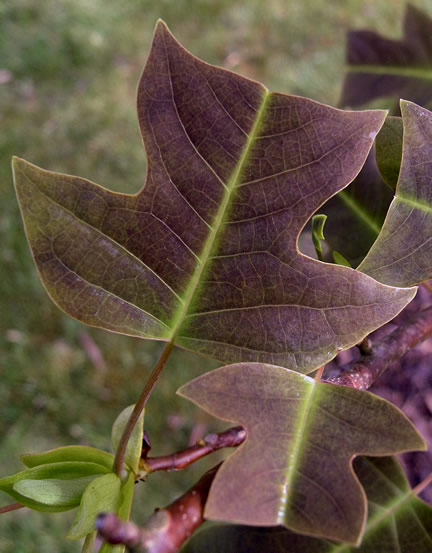| General Description | Liriodendron chinense has large, deeply lobed leaves and olive green flowers borne on mature trees. This species has been placed on the IUCN Red List as globally threatened. |
| ID Characteristic | Large, deeply-lobed leaves. Flowers have short inner petals. |
| Shape | Columnar. |
| Cultivation | Grow in full sun, in moist, well-drained, acidic to neutral, humusy soil. Tolerant of some shade. |
| Pests | No serious pests or diseases of note. Occasional problems include: mealy bugs, leaf miners, borers, aphids, scale, powdery mildew, verticillium wilt, and canker. Aphids will secrete honeydew on the leaves, leaving them susceptible to sooty mold. |
| Habitat | Evergreen forests in the Yangtze River valley and further south to Vietnam. |
| Bark/Stem Description | Grey to greyish brown twigs. |
| Leaf Description | Deeply tri-lobed with terminal lobe truncated, bright green turning golden yellow in autumn, 4-12 x 3-9.5 cm. |
| Flower Description | Showy, cup-shaped, tulip-like, olive green with yellow at the base, up to 4 cm long. Appear on mature trees after leaves have developed therefore often go unnoticed. |
| Fruit Description | Oblong, dry, scaly, cone-shaped, brown, containing many winged seeds. In clusters that disintegrate when ripe. |

.jpg)
